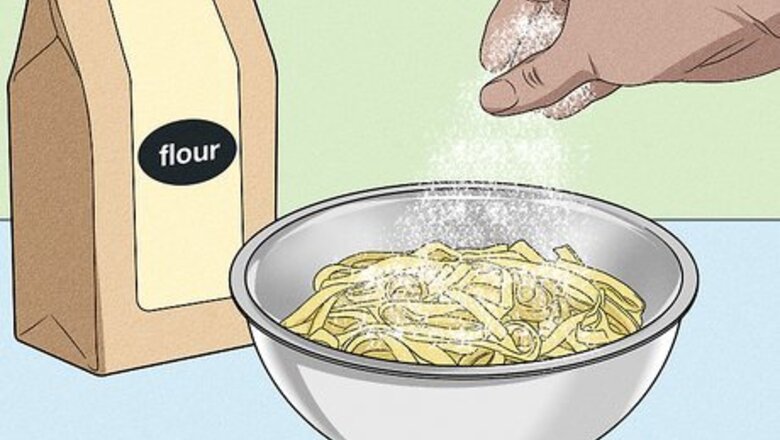
views
Refrigerating Fresh Pasta
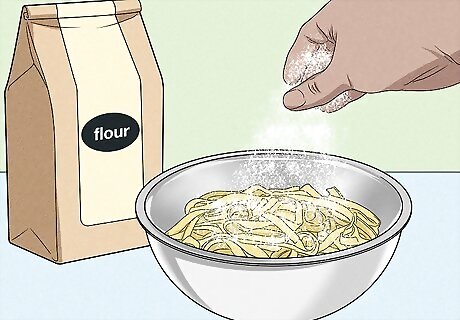
Toss your fresh pasta in flour to prevent it from sticking. Once you finish making homemade pasta, put it in a bowl and dust it with a pinch of white flour. Gently work the flour onto each piece of pasta so it sticks to the dough.
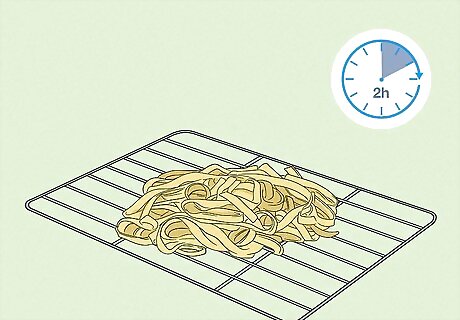
Let the pasta dry out on a wire rack for 2 hours. Spread out your homemade pasta on a wire cooling rack so there’s space between each piece. Leave the rack in a cool, dry place for at least 2 hours so your pasta firms up and is less likely to clump together when you put it away. If you’re drying out long noodles, portion them out into single servings and form them into nests or baskets to dry. That way, they take up less room.
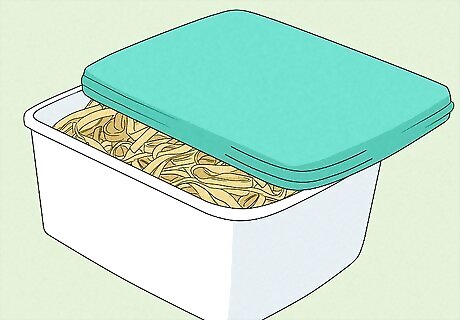
Transfer the pasta to an airtight container or bag. Find a plastic container with a tight lid or a resealable plastic bag that will fit all of your pasta. Since your pasta is floured and dried, you can put all of the pieces into the same container without the risk of them getting stuck together. Split your pasta into portions and put them in separate containers so you can grab out a single serving at a time. Label the bag or container with the date you made the pasta so you don’t forget to use it before it goes bad.
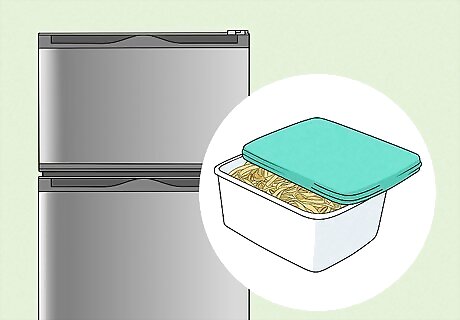
Keep your pasta in the fridge for up to 1–3 days. Your pasta will taste the best the sooner you use it, so try to use it within the next day if you can. Otherwise, the pasta is safe to eat for up to 3 days. When it’s time to cook the pasta, take out as much as you want to make and prepare it in boiling water. Since you labeled your pasta, it will be easier to track how long you’ve been keeping it in your fridge.
Freezing Fresh Pasta
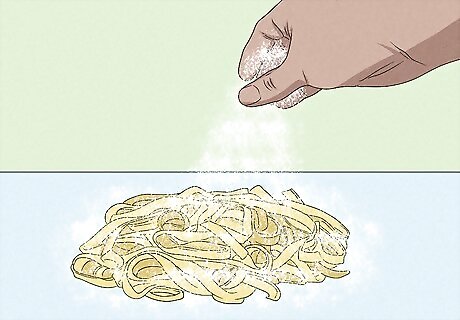
Toss your pasta in flour to keep it from sticking together. Sprinkle a pinch of standard white flour across the pasta and toss the noodles together so each piece is evenly coated. Separate the pieces when you’re finished.
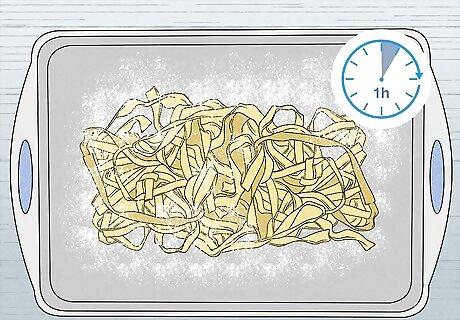
Dry the pasta on a baking tray at room temperature for 1 hour. Line a rimmed baking sheet with a piece of parchment paper to keep the pasta from sticking to it. Space out the pieces of your pasta on the baking sheet so air can flow around them. Keep the tray of pasta on your countertop to dry so the pieces are less likely to clump up or stick to each other. Form long noodles into baskets or nests to portion them out and save space on your tray.
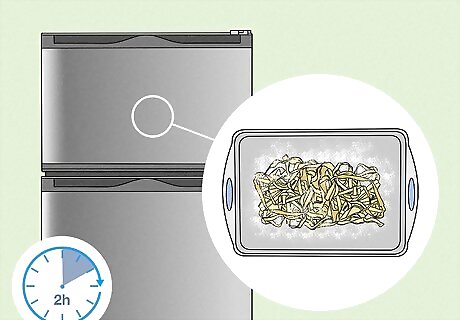
Put the tray of pasta in your freezer for 2 hours. Once the pasta feels dry, keep the tray uncovered and move it into the freezer. Your pasta will firm up even more and harden so the pieces are even less likely to stick together.
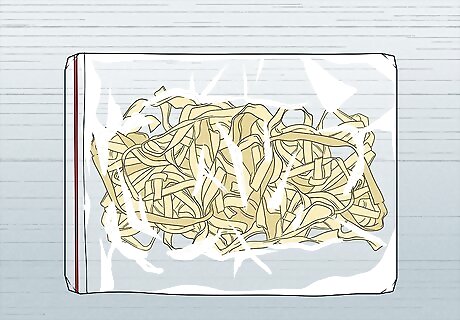
Transfer the pasta to an airtight container or freezer bag. Now that your pasta has started to freeze and harden, take them off of the tray. Scoop portions of your pasta into a container with a lid or a freezer-safe resealable bag. Label the container with the date and the type of pasta so you can easily tell what’s inside. Try to squeeze all of the air out from a bag before you seal it to save space and prevent freezer burn.
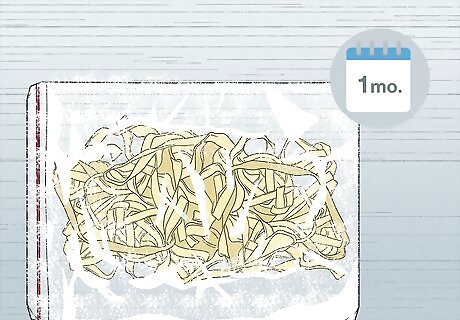
Keep your pasta frozen for up to 1 month. Fresh pasta will start to lose its flavor if you store it for longer than 1 month, but it will still be safe to eat. When you want to prepare your pasta, take out a portion from the container and add it directly to boiling water without thawing it. Frozen pasta takes a few extra minutes to cook than fresh pasta.
Drying Fresh Pasta
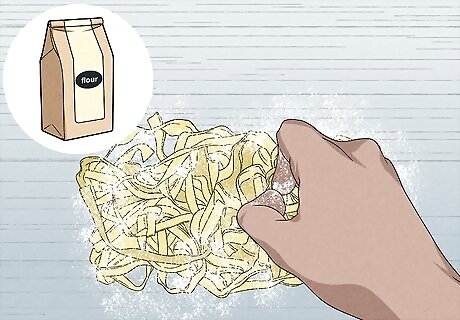
Dust your pasta with flour so the dough doesn’t stick. Take a pinch of white flour and spread it over the pieces of pasta. Toss your pasta together with the flour in a bowl or on a flat work surface until the pasta is evenly coated.
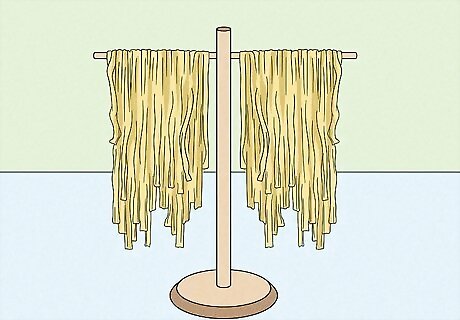
Hang long noodles on a rack to dry until they feel brittle. Spread the pieces out on a pasta drying rack and let the noodles sit for a few hours or overnight. Try to bend one of the noodles to see if it’s brittle and snaps in half to determine if they’re completely dried out. If you don’t have a pasta rack, you can drape noodles over a clean clothes hanger or from the top rack inside your oven.
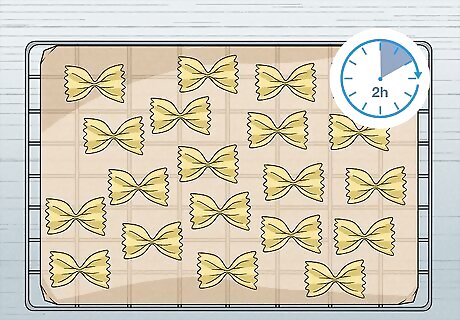
Dry short noodles and pasta on a wire cooling rack. If you’re making farfalle or preparing fresh gnocchi, cover a wire cooling rack with a tea towel. Spread the pasta out on the wire rack so there’s space between the noodles, and leave the rack out on your counter to dry. Flip the pieces over every 30 minutes until they completely dry out, which will take about 2–3 hours. If you don’t have the space to hang your noodles to dry, wrap them into a basket or nest shape and place them on a wire cooling rack to dry out. That way, you have perfect, even portions too.
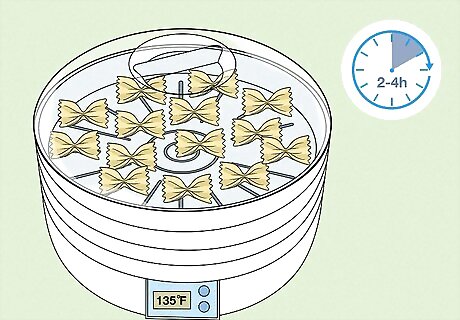
Use a dehydrator if you want to quickly dry your pasta. Spread your pasta out on the trays of a dehydrator so the pieces aren’t touching. Set the dehydrator to 135 °F (57 °C) and let it run for about 2–4 hours to remove the moisture from your pasta. If you want to dehydrate pasta in your oven, turn it 100–110 °F (38–43 °C). Put your pasta on a baking tray and put it on the center rack in your oven. Give spaghetti about 4 hours, macaroni 8 hours, and any other type of pasta 12 hours to fully dehydrate.
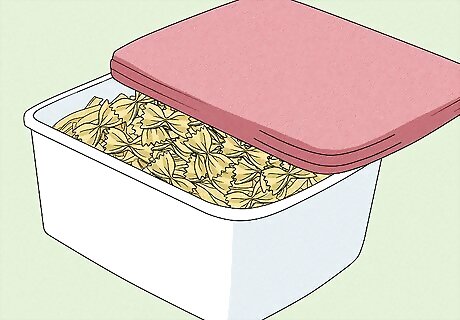
Put your pasta in an airtight container. Once the pasta is completely dried, move all of the pieces into a container with a lid or a resealable plastic bag. Make sure you seal the container tightly so it isn’t exposed to the outside air.
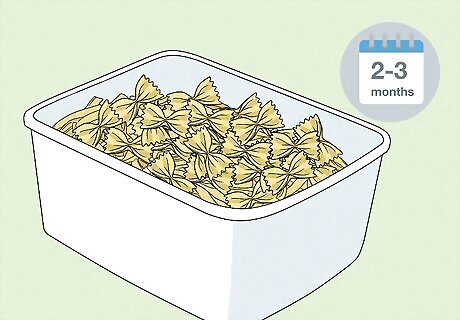
Store your pasta at room temperature for 2–3 months. Put your pasta out of direct sunlight in a cool, dry place. When you want to use your pasta, scoop out as much as you need and add it to boiling water to start cooking. Dried pasta will take about 4–7 minutes to cook through.
Storing Fresh, Unshaped Pasta Dough
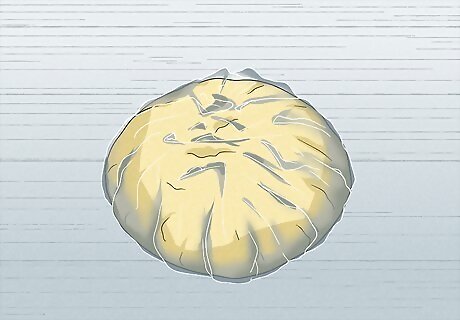
Wrap the unshaped dough in plastic cling wrap. After you knead out your dough, form it into a large ball. Cover the ball with plastic cling wrap and press it tightly against the dough so there aren’t any air pockets. Write the date on the outside of the cling wrap so you can keep track of when you made the dough and when you should use it.
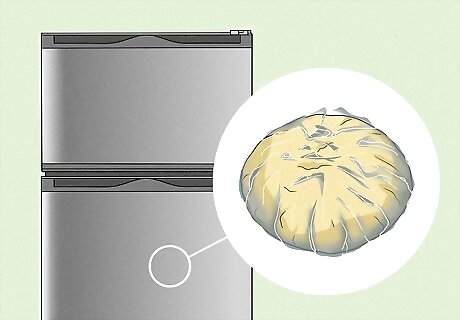
Keep the dough in your fridge for up to 2 days. Set the dough in your fridge where you won’t forget about it since the dough has a shorter shelf life. Whenever you want to use and shape the dough, take it out and unwrap it. Your dough may turn a grayish color when you keep it in the fridge, but it won’t affect the flavor or texture.
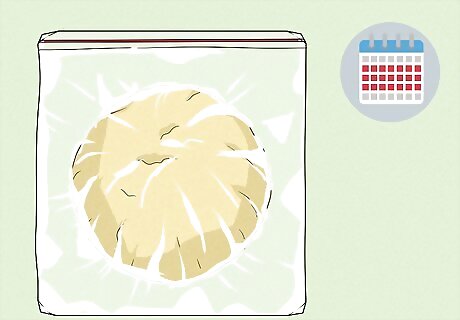
Put the dough in a bag in your freezer to keep it for up to 3 weeks. Take the wrapped dough and put it in a resealable freezer bag. Try to remove all of the air from the bag before you completely close it. Store the dough in your freezer until you’re ready to shape and cook it. When you want to use the dough, transfer it into your fridge the night before to let it thaw.













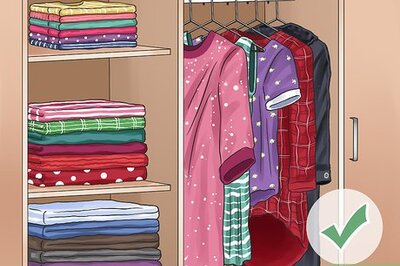





Comments
0 comment